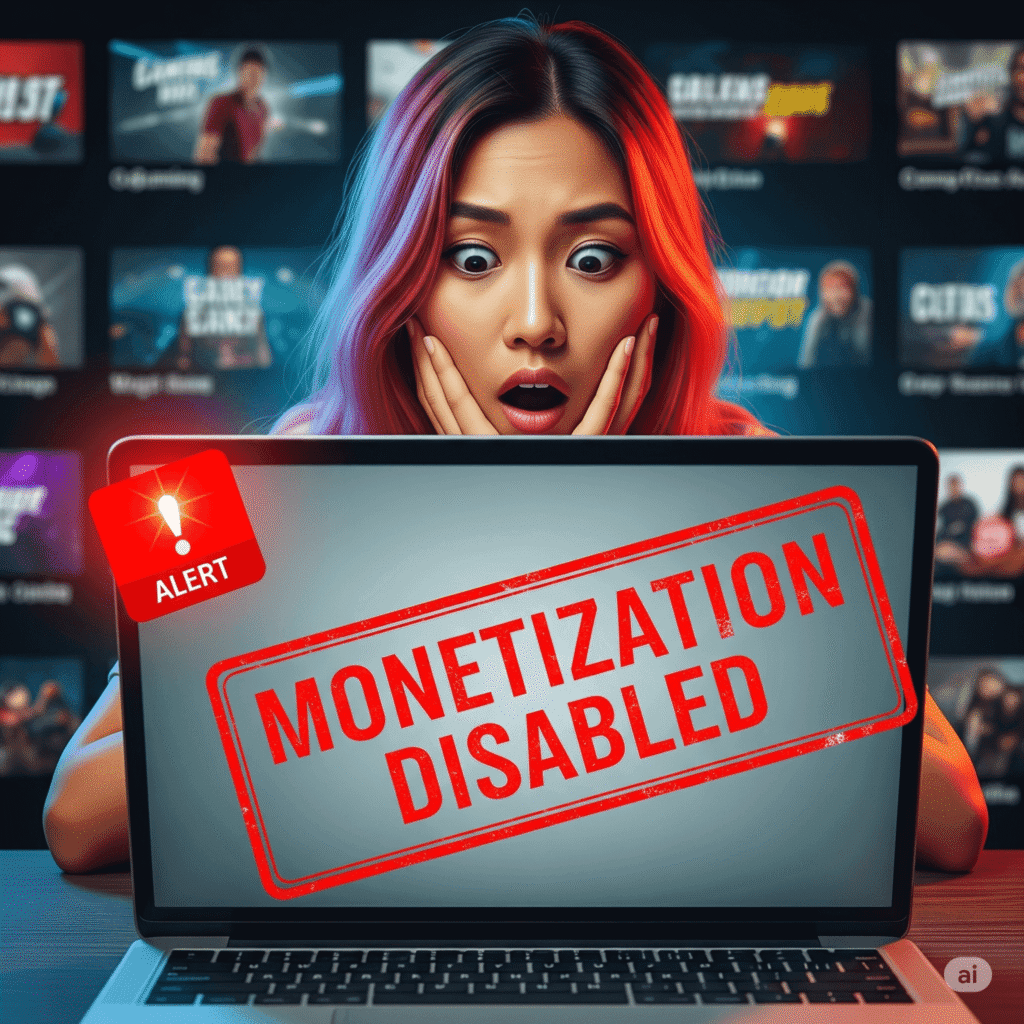Introduction:
If you’re building a YouTube channel using shortcuts — AI-generated videos, reused clips, or auto voiceovers — this is your warning. Starting July 15, 2025, YouTube has made it clear: no originality, no earnings.
The platform’s updated monetization rules target creators who lean too heavily on automation or copy-paste tactics. If you’re not bringing real value or effort to your content, your chances of getting paid are shrinking fast.
Let’s get into what’s changing, why YouTube is doing it, and how you can stay safe without losing revenue.
What’s Changing in YouTube’s Monetization Policy?
YouTube’s new rules are focused on keeping content meaningful. That means creators can’t just throw together quick, low-effort videos and expect to earn money anymore.
Here’s what won’t qualify for monetization now:
- AI-Generated Videos with No Human Effort
Videos created with tools like text-to-video or synthetic voice apps — without editing, voiceover, or any personal touch — will be denied monetization. - Recycled Content from Other Creators
YouTube’s new policy shuts down channels re-uploading viral clips or reaction videos that lack original commentary or creative changes. - Unedited Stock Footage or B-Roll Montages
Uploads that are made up of public footage, stock visuals, or replayed material without a script or explanation won’t be accepted. - Synthetic Podcasts with No Real Host
Podcasts built entirely with AI-generated voices, scripts, or avatars — no real discussion, no human context — will not be eligible.
Why Is YouTube Taking This Step?
YouTube has been flooded with auto-generated content in recent years. That’s not always a bad thing, but too much of it leads to one major problem: low trust — both from viewers and advertisers.
Instead of inspiring creativity, these types of videos often deliver recycled information, robotic narration, and no engagement. That’s bad for business — and bad for viewers.
According to YouTube’s official guidelines:
“We aim to reward creators who produce thoughtful, engaging content. Low-effort uploads don’t align with the standards of the YouTube Partner Program.”
Other platforms like Instagram and TikTok are also moving in this direction — they want to promote authenticity over automation.

What You Must Do to Stay Monetized
You don’t need to abandon AI. What YouTube expects is intentional use, backed by real contribution.
Here’s how you stay compliant:
- Add Your Voice or Appearance
Narrate your videos, show your face, or use both. A visible or audible creator builds trust and makes content feel real. - Use AI as a Support Tool, Not a Crutch
If you’re writing a script with AI, that’s fine. But rewrite it. Put your own words, thoughts, and personality into it. - Add Commentary, Explanation, or Reactions
Whether you’re using a news clip or public footage, you should offer your own perspective. If there’s no insight, it’s just noise. - Stay Focused on Viewers, Not Algorithms
Instead of gaming the system, focus on giving value. What do people really want to learn, see, or experience? Make that video.
What Happens If You Ignore These Rules?
Trying to bypass these changes might work for a while, but the risks are higher now:
- You’ll be denied entry into the YouTube Partner Program
- Ads may be removed from existing videos
- Your channel might face limited reach or discoverability
- Repeated violations could lead to strikes or demonetization
YouTube has advanced tools that can detect AI voice patterns, repeated footage, and even cloned video scripts. You won’t always get a warning.
Examples: What’s Approved vs. What’s Rejected
| ✅ Approved | ❌ Rejected |
|---|---|
| Personal vlog with voiceover | Fully AI-narrated video with no edits |
| Educational content with your face on screen | Copy-pasted shorts from other platforms |
| Reused clip with your own explanation | Stock footage with no original script |
| Podcast hosted by you | Auto-generated AI podcast without a speaker |
Resources to Help You Stay Compliant
These resources help you stay clear on where the lines are — especially if you work with public content or automated tools.
FAQs
Q. Can I still use ChatGPT or AI tools to help with content?
Yes — but don’t let them replace your voice. You must show real involvement.
Q. What about Creative Commons or public domain clips?
You can use them, but only if you offer a new angle, voiceover, or story around them.
Q. Does this rule apply to Shorts and Podcasts too?
Absolutely. YouTube’s enforcement applies across all formats.
Conclusion
YouTube’s new monetization policy isn’t just about stopping AI — it’s about encouraging real creators. If you’re adding something honest, helpful, or human to your videos, you’ll be rewarded.
Use tools smartly. Speak in your own voice. Bring your point of view to the table.
That’s what YouTube wants. And honestly, that’s what your viewers are looking for, too.
